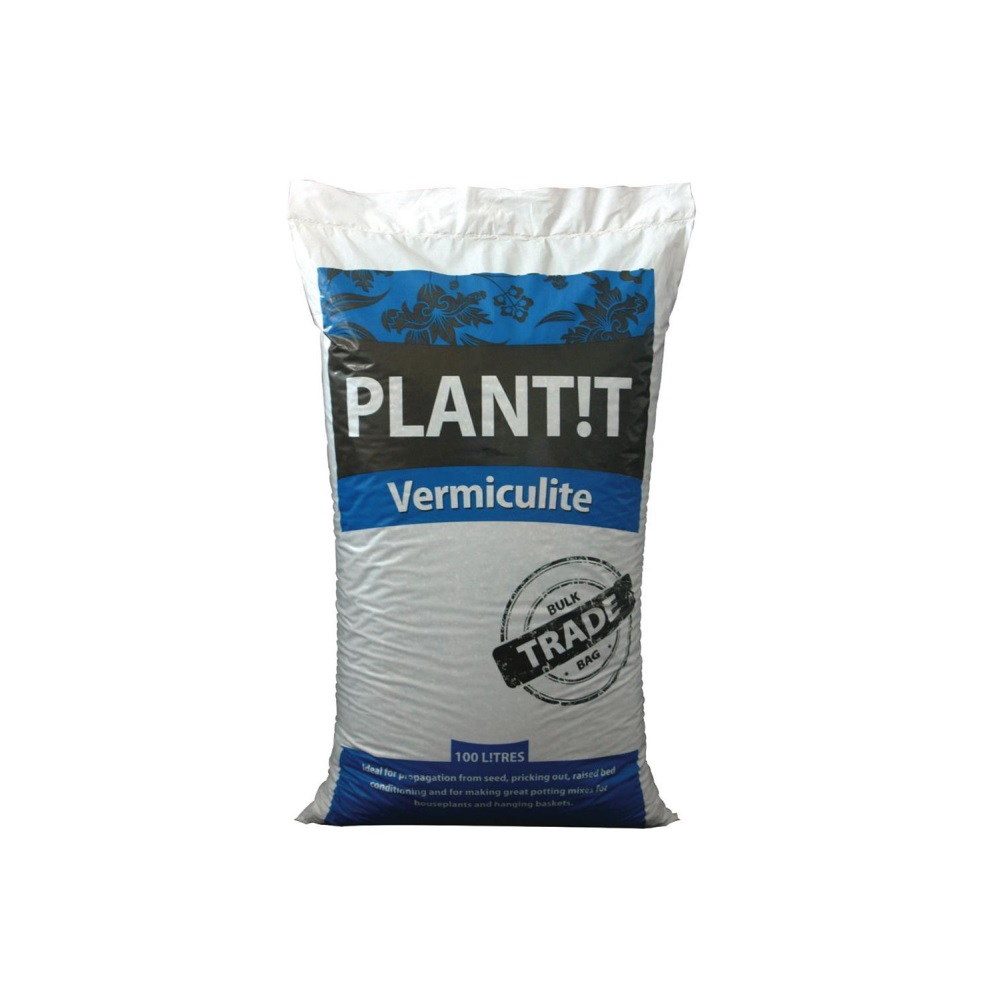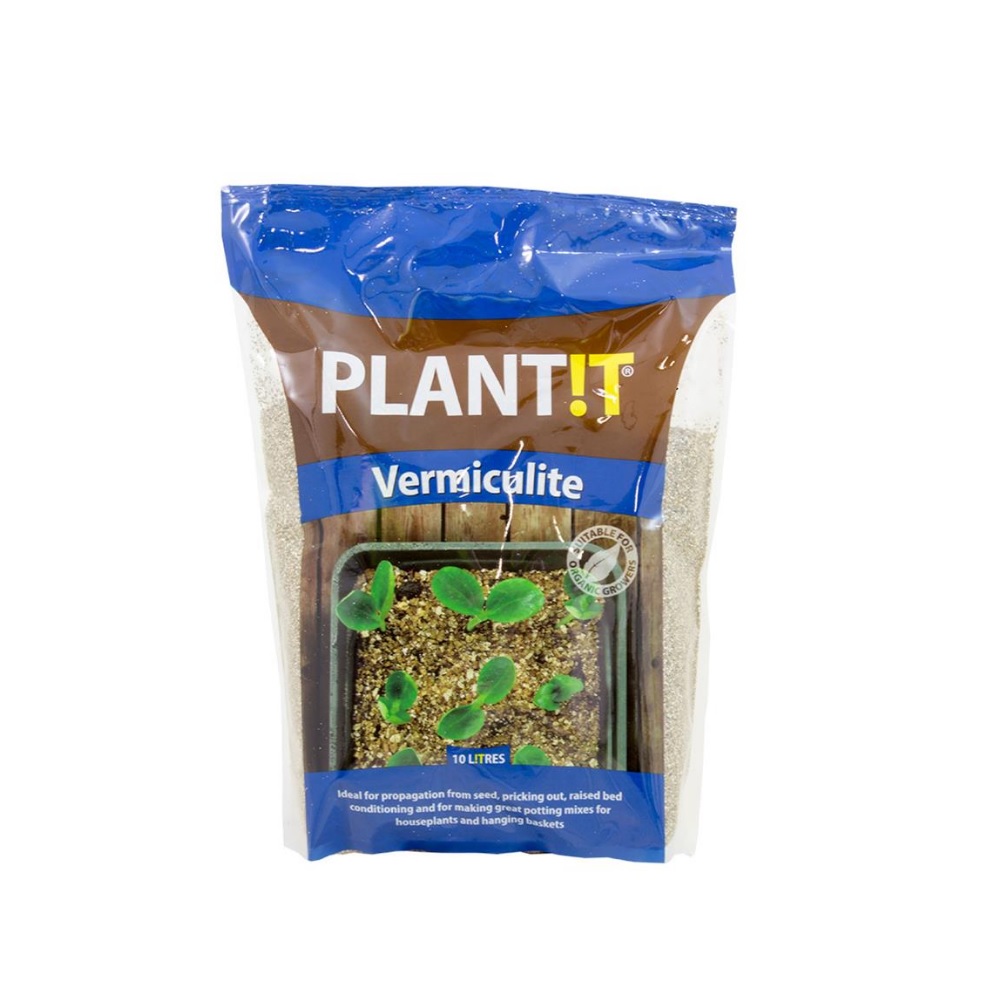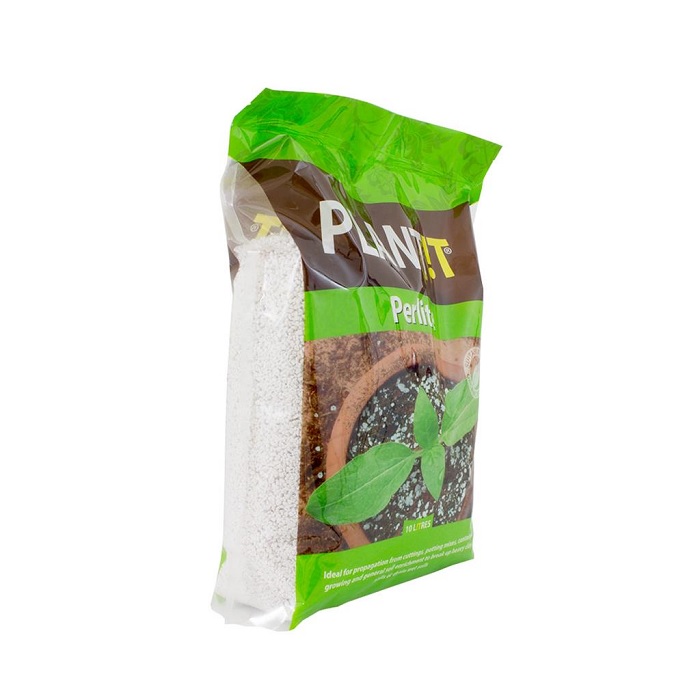When to use Vermiculite and/or Perlite? – Grow Media 101

In this blog we are going to look at Vermiculite and Perlite, two commonly used growing mediums and soil improvers.
Vermiculite and Perlite, whilst two different substrates, each with their own unique qualities and uses… are often spoken about in the same breath. Today, we are going to look at both of them in a little more detail, and assess their strengths and weaknesses, so we can clarify why growers use them, and in what applications and environments they are best suited to.
So sit back and let us explain why seasoned growers and hobbyist gardeners alike use these popular growing mediums.
What exactly is Vermiculite?
Vermiculite is very often used in horticulture for its unique qualities, it is a highly absorbent and lightweight growing medium. It has a structure resemblant to an accordion with thin, fat flakes that expand when heated.
As a growing medium it provides excellent conditions for growing plants with its impressive water retention and aeration characteristics.
Vermiculite is a naturally occurring mineral and is also popular in construction and other industries due to being lightweight with insulation and fireproofing traits that stem from its unique ability to expand.
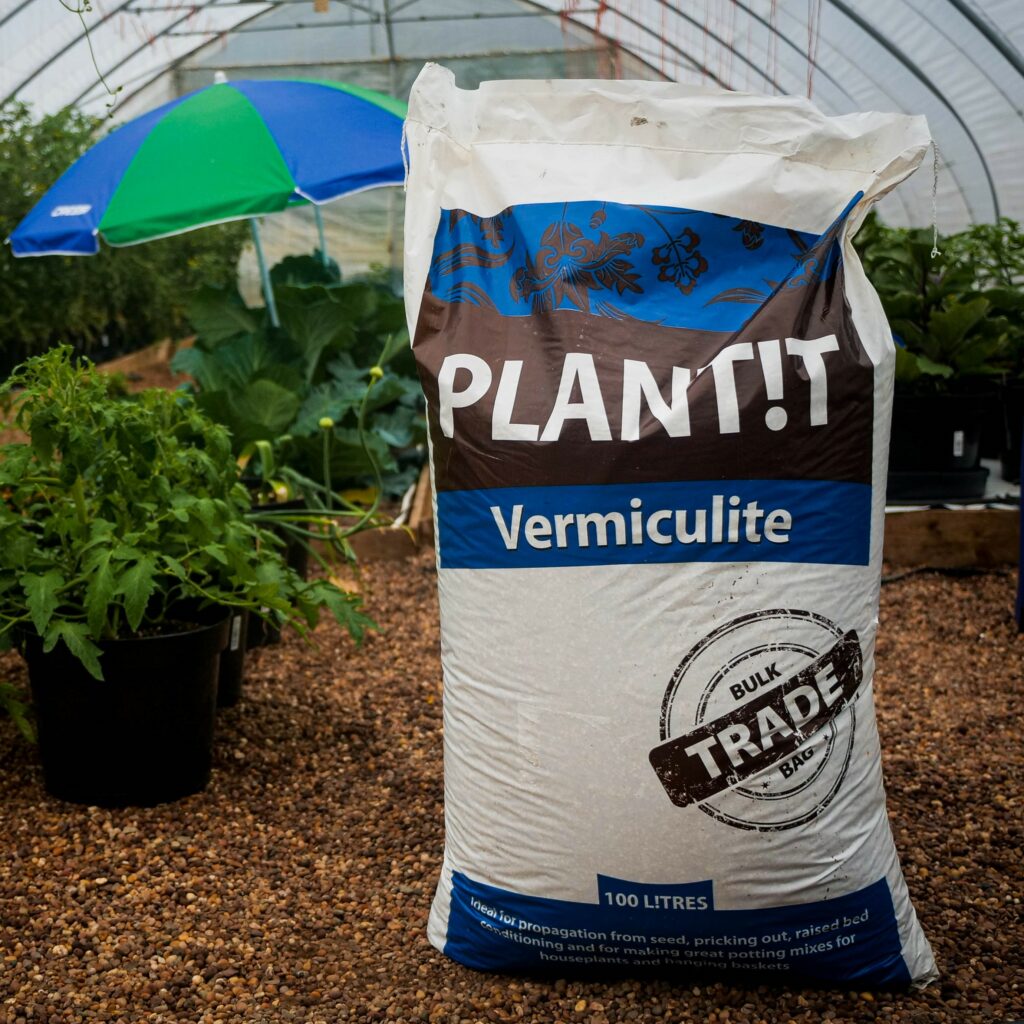
And, Perlite?
Perlite is a popular growing medium and soil improver used in horticulture that is derived from rapidly heated volcanic glass, comprising of small particles that are white in colour with a large surface area.
Its unique properties extend to not only being lightweight, but also having a porous structure with minute spaces (very small holes) that liquid and air can pass through, which give it great aeration qualities.
This type of growing media is often used as a soil improver, and is added to soil and potting mixes to improve drainage and aeration, and also to counteract the soil compacting, to enable for better root oxygenation and aid water retention.
Perlite also has a neutral pH making it appropriate for a wide range of different plants, providing optimal conditions for your plants to thrive.
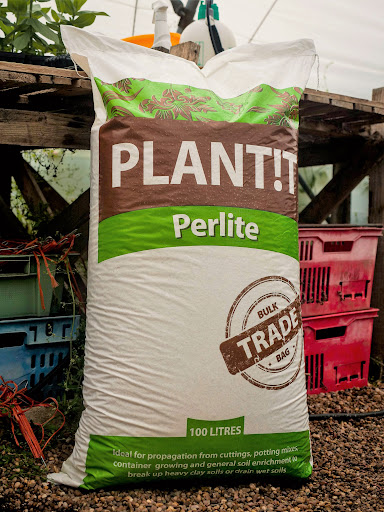
Unsure whether to use Vermiculite or Perlite as a grow medium or soil improver?
Whether you would be better suited to using either of these grow mediums really depends on the specific needs of your plants and the unique qualities of your grow room, as every environment will be different and have its own characteristics, that may lend slightly better to either one of these two grow mediums.
Vermiculite and Perlite, while often spoken in the same breath, do have different traits. Seasoned growers will more often than not use them together or in tandem with other growing media to come up with a bespoke growing mix to best suit the needs of their plants. To help you better understand their differences, here’s a rundown of their qualities…
Water Retention:
Vermiculite is better suited for plants that need moist soil constantly, as Vermiculite retains more water than Perlite.
Perlite allows less retention of water and is more suited for plants that need better drainage and aeration.
Aeration:
Vermiculite does provide aeration, not quite to the same extent as perlite, however it does hold moisture better while allowing air to your plants root zone.
Perlite has excellent aeration qualities enabling for decent airflow to your plants roots, in addition to stopping compaction.
Drainage:
Vermiculite offers substantial drainage, however it does retain more water than Perlite.
Perlite gives outstanding drainage and is better suited for potentially waterlogged environments.
Weight:
Vermiculite when dry is generally lighter than perlite.
Perlite is still lightweight, and adds minimal weight to your growing mixture.
Nutrient Holding Capacity:
Vermiculite as a growing medium does allow for some capacity to hold onto nutrients.
Perlite doesn’t generally hold nutrients and is more useful for its aeration and drainage properties.
Use Cases:
Vermiculite is best used for plants needing moist soil such as rooting cuttings and seed starting often during the propagation process and is commonly used alongside other growing media.
Perlite is perfect for plants that need to be well drained such as cacti and succulents and plants that are susceptible to waterlogged roots. It is often used to improve aeration in predominantly soilless mixes.
In Conclusion:
To summarise whether using vermiculite or perlite would be better for your plants, we must stress again that it all depends on the specific needs of your plants and your environment. Seasoned gardeners will often use either Vermiculite or Perlite alongside a grow medium such as coco coir or peat moss to make a bespoke mixture tailored to the needs of their plants.
Video: What’s the difference between Vermiculite and Perlite?
Here’s a well informed video that nicely explains the both of these types of media / soil improvers in more detail…

